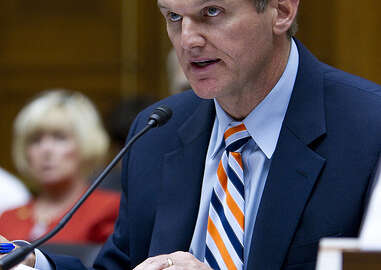After nearly two years of planning, significant changes are coming soon to the military retirement system.
The Federal Retirement Thrift Investment Board (FRTIB), the agency that administers the TSP, has been preparing and working with individual military services to prepare and train eligible service members on their options.
But the FRTIB’s Sept. 11 proposed rule offered more specific details about how the agency will implement the new blended retirement system (BRS) — and exactly who is eligible and when they’ll receive their first contributions.
Generally, the new plan moves military members from a retirement system that mostly relied on a vested defined benefit plan to one that includes a reduced defined benefit plan with greater TSP benefits, continuation pay and some lump-sum options.
“Blended retirement” incorporates four major changes to the current retirement system for uniformed military.
First, the employing military services will contribute 1 percent of a service member’s monthly pay to his or her TSP account. These contributions are in addition to an employee’s basic pay; the military services will continue to contribute whether or not members make their own contributions from their pay.
In addition, service members will be automatically enrolled to contribute 3 percent of their basic pay. The program will re-enroll them annually if service members stop making contributions.
Military employers will match their service members’ TSP contributions dollar for dollar for the first 3 percent of basic pay and 50 cents on the dollar for the next 2 percent.
Finally, the program will invest employee contributions in an “age appropriate” lifecycle (L) fund rather than the government securities (G) fund, unless service members choose otherwise.
Two groups of service members will be eligible to participate in the new retirement system:
- Service members who enter the military on or after Jan. 1, 2018.
- Members of the military with 12 years or fewer of service who decide to opt in to blended retirement.
Individual services will determine which military members are eligible for blended retirement. Reservists who have less than 4,320 retirement points before Dec. 31, 2017 may also be eligible.
New service members who enter duty on or after Jan. 1 won’t receive their service’s first automatic contributions until the first full pay period 60 days after their pay entry base date.
Those automatic contributions of 1 percent will stop on the first full pay period 26 years after a service members’ entry date. This applies to both BRS participants who entered service in 2018 and service members who decided to opt in to the new system.
This means that a military member who served for six years before opting in to blended retirement, for example, can receive employer matching contributions for 20 years.
According to the NDAA, BRS participants must finish two years of military service before they’re vested in their service’s automatic contributions.
The FRTIB said it expects it won’t automatically enroll new BRS participants for contributions until the first full pay period 60 days after their pay entry base date.
“The attrition rate is high in the first 60 days of service and to require automatic enrollment during that period would result in a large number of automatic cash-outs, resulting in increased operational costs which are then passed along to all TSP participants,” the proposed rule said.
Service members who decide to opt into the new system can continue to contribute at the rate they were previously making before participating in the BRS. The FRTIB will only automatically enroll older members unless they leave the service and choose to re-enter. Then, the program will automatically re-enroll those members to make 3 percent contributions.
Congress included the changes to military members’ retirement when it passed the 2016 National Defense Authorization Act in November 2015.
Since then, the Federal Retirement Thrift Investment Board has been busy preparing for the predicted influx of new members to the TSP.
The FRTIB has spent the past few months testing its systems with the payroll offices at each individual military service. It deployed an “opt-in” training course in February, which describes the components of the new blended retirement system and how it will impact current service members who decide to opt in to BRS.
More than 163,800 people had taken the course as of the end of May, the FRTIB said during its May 31 meeting.
The agency also developed a blended retirement calculator, which lets service members compare their contributions and income under the current and new systems.
The Federal Retirement Thrift Investment Board said it expects to auto-enroll as many as 269,000 new service members to the TSP in the program’s first year, while also enrolling as many as 300,000 to 475,000 new participants who choose to opt in to the plan. The agency could see as many as 744,000 new TSP participants in 2018.
Copyright
© 2024 Federal News Network. All rights reserved. This website is not intended for users located within the European Economic Area.
